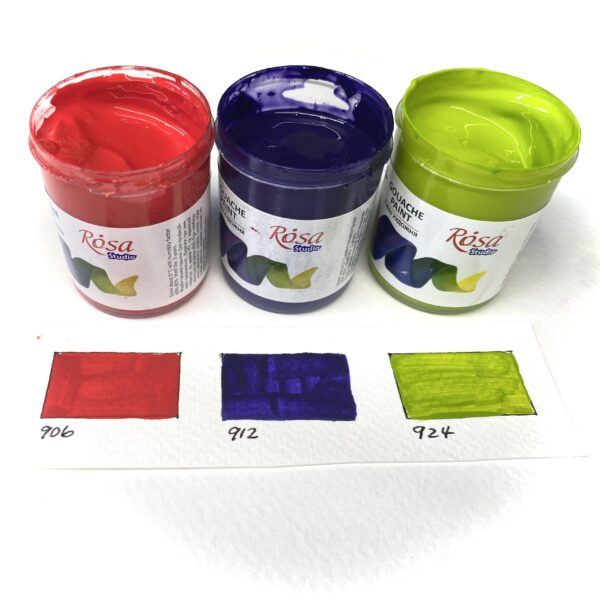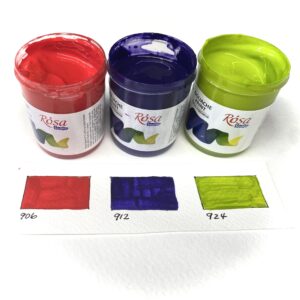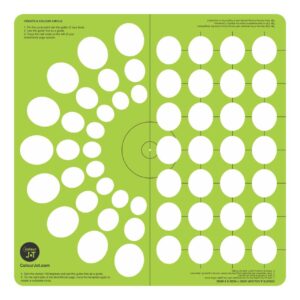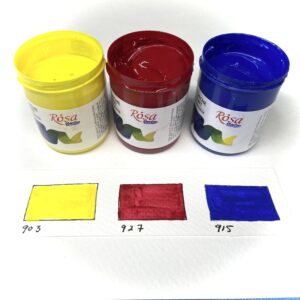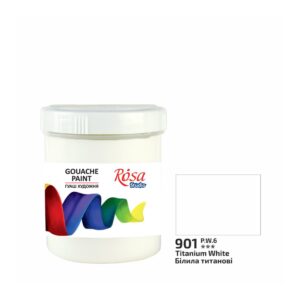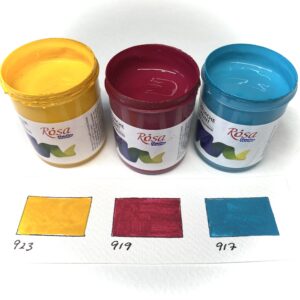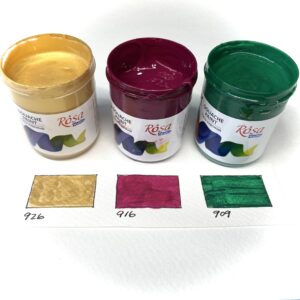Gouache is a preferred paint option for colour theory for artists accustomed to working in oil or acrylic because it will have a similar tactile feel and brush handling. Plus, unlike watercolour, Gouache is opaque and cannot rely on the white of the page to light colours. White must be used to create tints and lighter colours. Always buy extra white. White is sold separately.
Set F includes: 906 Red n912 Violet 924 Yellowish Green
